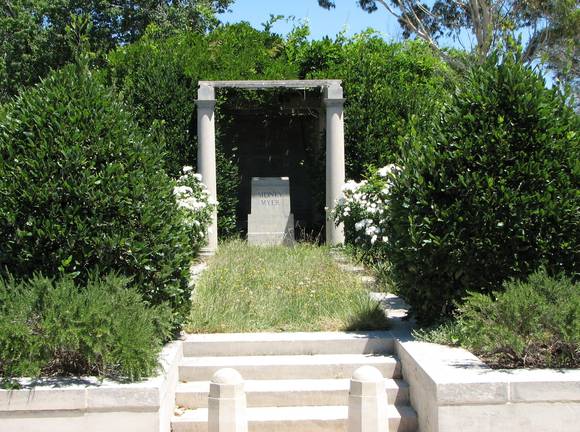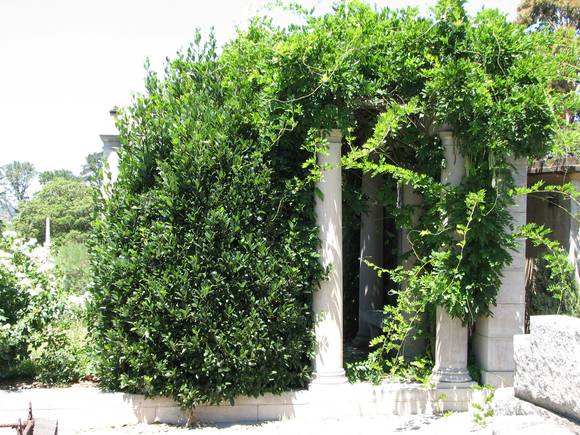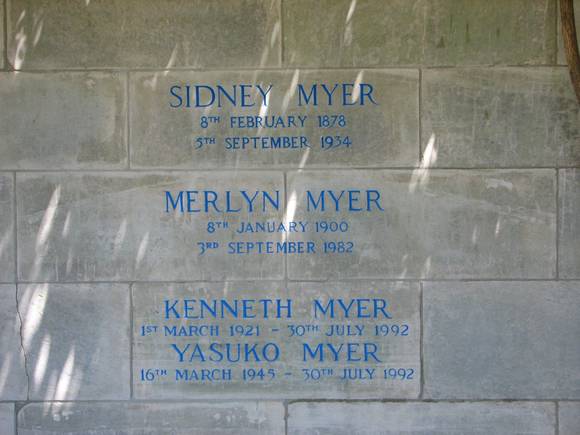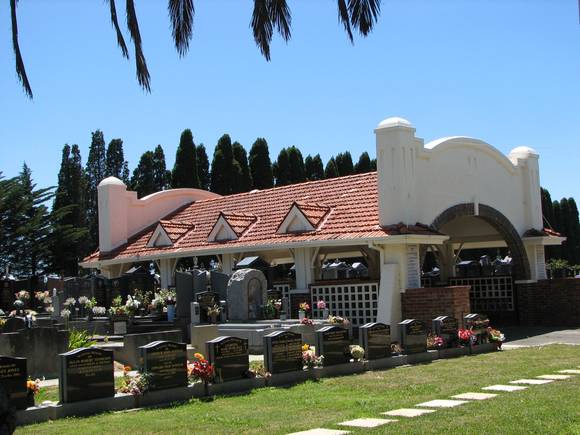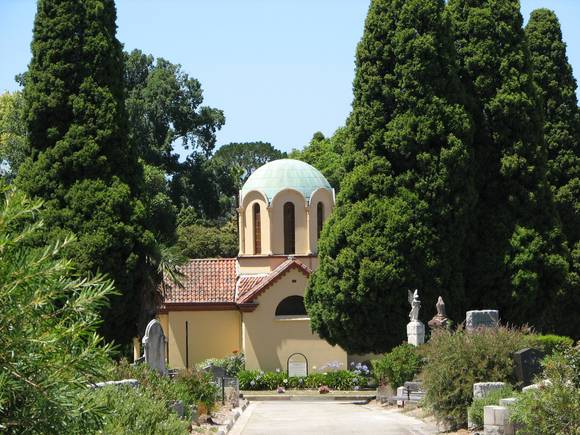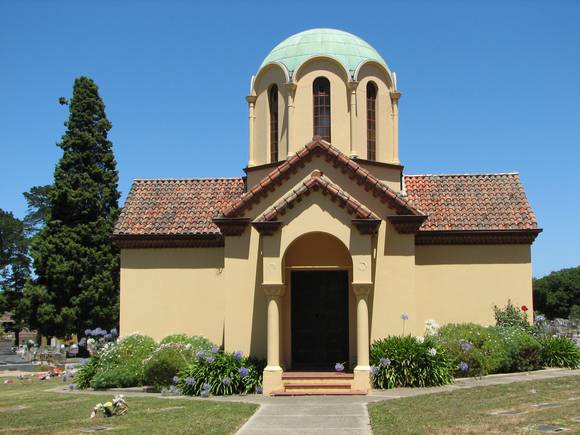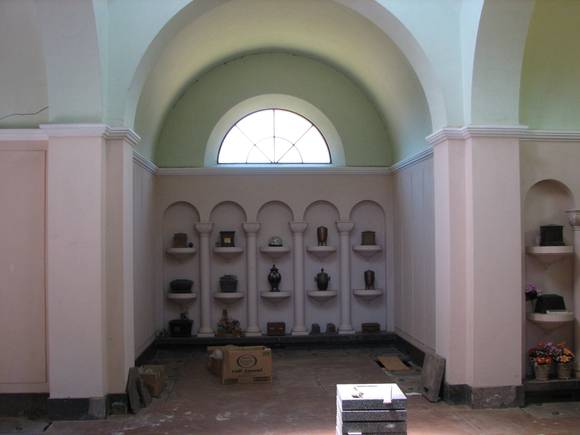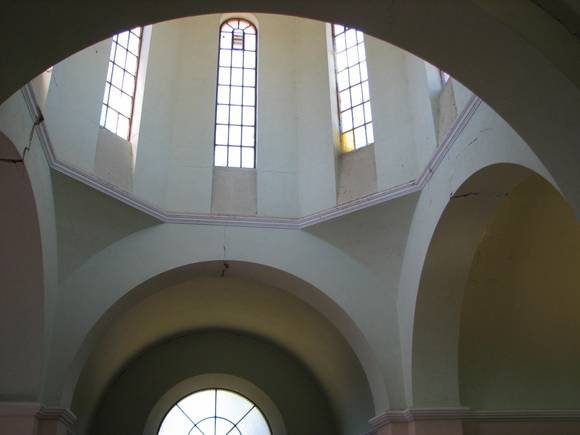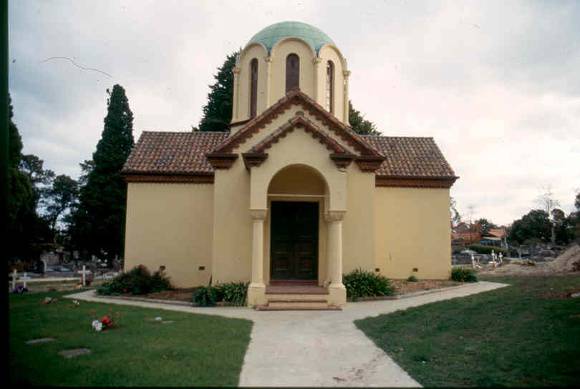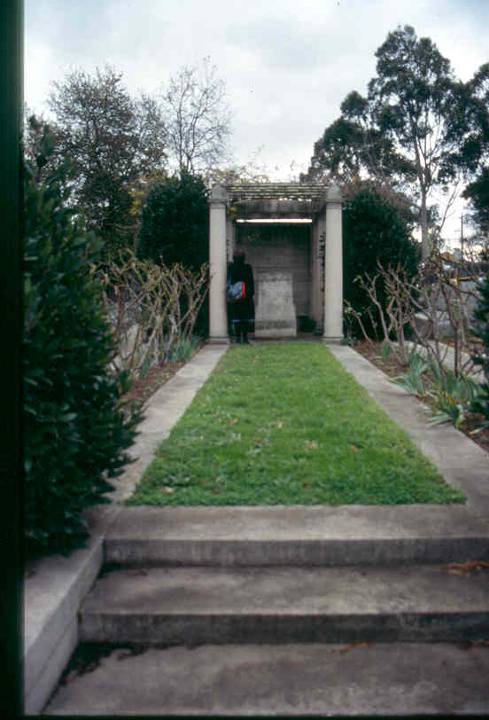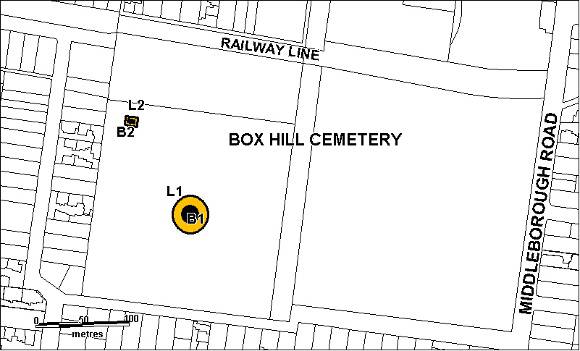| Back to search results » | Back to search page » |
|
BOX HILL CEMETERY COLUMBARIUM AND MYER MEMORIAL
Statement of Significance
What is significant? The word columbary derives from Latin "columba" meaning dove, a columbarium being a dovecote or underground vault with recesses in the walls to receive the ashes of the dead. In the 1920s the Box Hill Cemetery Trust defined it as a subterranean sepulchre set apart for the reception of urns of ashes. Whilst cremation was made legal in Victoria in 1903, only 10% of Victorians who died in the 1930s were being cremated. Following permission from the Health Department in 1928, the columbarium was erected in 1929 to a design by architects Rodney Alsop and A Bramwell Smith, who, it was claimed, sought to evoke the vista of the tomb of Galla Placidia at Ravenna. Located at the centre of a system of radial pathways, the columbarium is in the style of a Byzantine church and is constructed of rendered brick. Entrance is via a gabled porch, through bronze doors. The Greek cross plan has a small octagonal tower at the crossing, with copper sheathed cupola, and the arms of the building are roofed in Cordovan tiles. Light is admitted by lunette windows in the gable ends of the arms. Niches and recesses in the walls are for storing urns, and caskets are buried in a chamber in the concrete floor. The ceilings were originally painted with gold stars on a sky-blue background. Sidney Myer was born in Russia in 1878, migrated to Australia in 1894 and made his fortune, founding the Myer Emporium. He died in 1934. The Myer memorial was designed by the internationally renowned British architect Edwin Lutyens, in association with Melbourne architects Yuncken, Freeman, Freeman and Griffiths. Lutyens had been involved with work on the Myer residence "Cranlana". The memorial is a large elevated plot approached from the east by steps leading to a central lawn flanked by flower beds. The altar stone is simply inscribed "Sidney Myer" and is approached through an open pergola composed of Tuscan order columns of Stawell sandstone and timber cross beams. Also interred are Myer's second wife, Merlyn, and the ashes of their son Kenneth and his second wife. How is it significant? Why is it significant? The columbarium is architecturally and aesthetically significant as a wonderfully august and refined example of the Byzantine style, and evokes the early Christian church. The building was designed to terminate vistas along narrow avenues of trees, and give the landscape a strong visual focus. The Myer memorial is of aesthetic significance as an austere but elegant memorial with unusual integration of planting into the design. It has historical significance as one of only two memorials in Victoria designed by the eminent architect Edwin Lutyens. The memorial has social significance for its association with one of the greatest Australian businessmen and philanthropists of the twentieth century.
Box Hill Cemetery, first gazetted in 1873, was extended twice in Victorian times and had a substantial 1935 addition to the cemetery grounds. The two most highly significant elements within the cemetery are the columbarium and the Sidney Myer memorial.
The columbarium and Myer memorial are of historical, aesthetic, social and architectural significance to the State of Victoria.
The columbarium is historically significant as an early and unusual means of storing cremated human remains at a time when cremation remained a minority practice. It is believed to be the only example of its kind in Victoria.
Group
Cemeteries and Burial Sites
Category
Cemetery/Graveyard/Burial Ground


